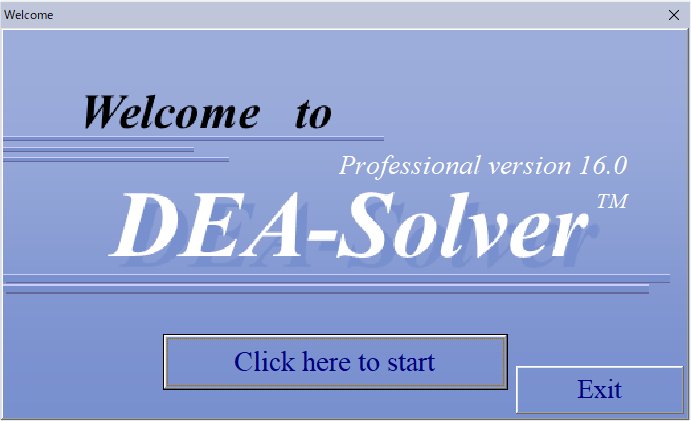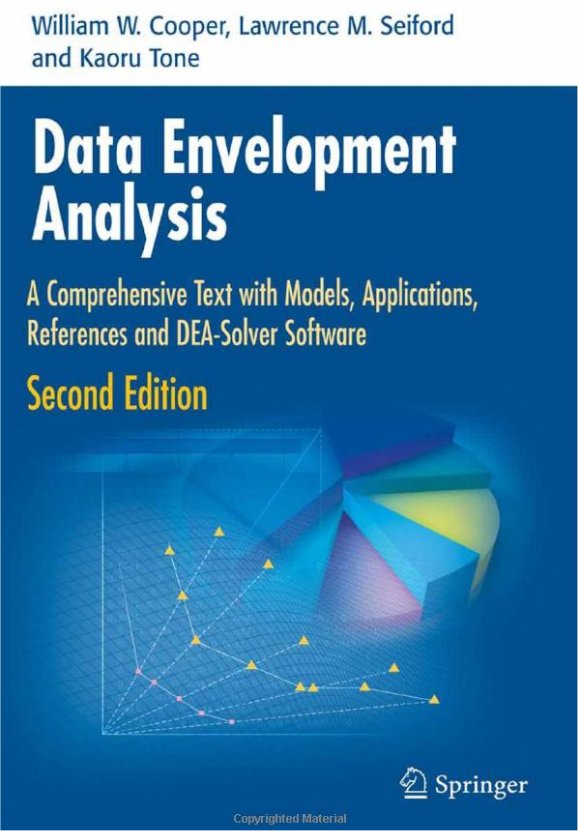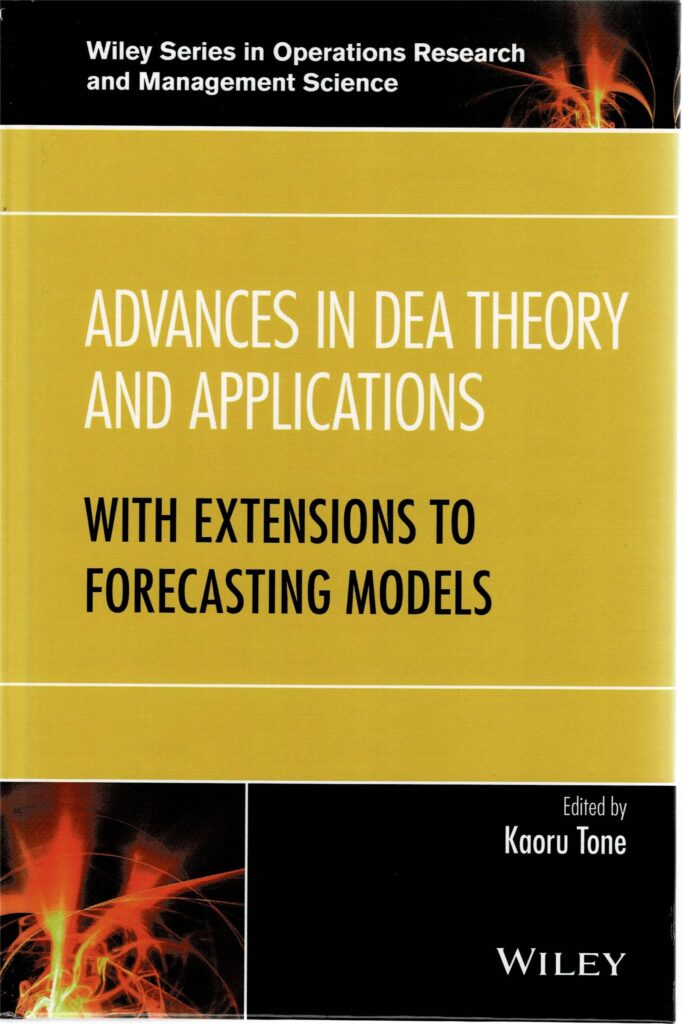Recent years have seen a great variety of applications of DEA (Data Envelopment Analysis) for use in evaluating the performance of many different kinds of entities engaged in many different activities in many different contexts in different countries. One reason is that DEA has opened up possibilities which have been resistant to other approaches because of the complex (often unknown) nature of the relations between the multiple inputs and multiple outputs involved in many of these activities.

Examples include the maintenance activities of U.S. Air Force bases in different geographic locations, or police forces in England and Wales as well as performances of branch banks in Cyprus and Canada and the efficiency of universities in performing their education and research functions in the U.S., England and France.
These kinds of applications extend to evaluating the performances of cities, regions and countries with many different kinds of inputs and outputs that include "social" and "safety-net" expenditures as inputs and various "quality-of-life" dimensions as outputs. We developed DEA SolverPro™ to explore such possibilities.
Textbook
DEA SolverPro™ is based on the following publications:
Data Envelopment Analysis-A Comprehensive Text with Models, Applications, References and DEA-Solver Software, by W.W. Cooper, L.M. Seiford and K. Tone 2nd edition (Springer 2006). DEA Book 2nd Edition (hardcover)

Potential users of the professional version of DEA SolverPro™ may purchase the 2nd edition of this text book first, and use the student version of the software which comes with the book.
While this book serves as a user's manual, a documentation "Introduction to DEA SolverPro™" is provided for users of our software which contains the introduction to the theory and references to all the DEA models. Note that the reference contains new models not covered by the textbook.
Advances in DEA Theory and Applications - With Extensions to Forecasting Models, Edited by Kaoru Tone (Wiley 2017). DEA Applications 1st edition (hardcover).

Advances in DEA Theory and Applications provides a much-needed framework for assessing the performance of competing entities with special emphasis on forecasting models. It helps readers to determine the most appropriate methodology in order to make the most accurate decisions for implementation. Written by a noted expert in the field, this text provides a review of the latest advances in DEA theory and application to the field of forecasting.
Designed for use by anyone involved in research in the filed of forecasting or in another application area where forecasting drives decision making, this text can be applied to a wide range of contexts, including education, health care, banking, armed forces, auditing, market research, retail outlets, organizational effectiveness, transportation, public housing, and manufacturing.
Versions and Latest Releases
Version 16: with the newest release of version 16d, we introduce a new input style, called Desirable Inputs Model. In this new model, we allow some input style (called IGood) which are larger the better. Examples include number of electric vehicles in an environmental model, the number of test takers in vaccine development model, etc. For more details, go to newsletter 20.
Version15: With the last release of 15f, we added the CRS (constant returns-to-scale) feature to NegativeData_SBM models. Furthermore, as for Malmquist models, we added the cumulative and the adjusted Malmquist indices. In the previous releases, we introduced a new feature Negative Data SBM, which handles negative data often encountered in industrial applications, like financial data. Now we can handle positive and negative data in a single DEA model. The efficiency scores are units invariant. For more details, go to newsletter 19.
Version 14: the final release is 14d with a new feature SBM Bounded Model as an extension to SBM Max of version 13. In the real world, there are cases where input resources and/or output expansion are restricted by external constraints. SBM Bounded Model takes care of such situations, so that the outcome of SBM Bounded Model becomes more realistic than before. Note that these SBM models essentially represent KAIZEN improvement. For more details, go to newsletter 18.
Version 13: the final release is 13g with a new feature super SBM Max model. Earlier SBM model replaces SBM Variation model of version 12. The SBM models usually report the worst efficiency scores for inefficient DMUS, i.e. the projected point is the farthest one on the associated efficient frontier. In contrast, SBM Max models look for the nearest point on the efficient frontier, so that one can attain an efficient status by minimum input resources and output expansion. For more details, go to newsletter 15.
Version 12: the final release is 12i, which repairs minor problems of the CCR model. In the release 12e, we introduced a new feature, called SBM Variations, by which you can find the nearest point on the associated efficient frontier by maximizing the efficiency score. For more details, go to newsletter 14. Note that in Version 12, we also added a feature, Directional Distance Model, which computes the efficiency of DMUs along the given direction of DMU. We offer two types of efficiency calculations, i.e. the ordinary one and the super efficiency. This is an innovative extension of Radial Models (CCR and BCC), which had limited orientations of input and output. For detailed discussion on this model, take a look at newsletter 13.
For all the newsletters, click DEA SolverPro™ Newsletters.
Operating Environment and Licensing
DEA SolverPro™ runs on a Windows PC under Excel (2013, 2016, 2019, 32 bit & 64 bit modes, macro enabled). Note that Windows environments on iOS have not been tested for accuracy.
